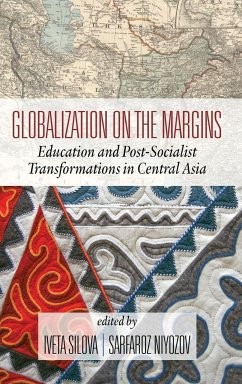Reflecting on almost three decades of postsocialist transformations, the second edition of Globalization on the Margins explores continuities and changes in Central Asian education development since the dissolution of the Soviet Union in 1991, with a particular focus on the developments that took place since the production of the first edition in 2011. Rather than viewing these transformations in isolation, the authors place their analyses within the global context by reflecting on the interaction between Soviet legacies and global education reform pressures in the Central Asian countries of Kazakhstan, Kyrgyzstan, Tajikistan, Turkmenistan, and Uzbekistan. This new edition, in addition to a revised introduction and a newly added conclusion, consists of four thematic sections, each reflecting a key theme in the educational life of the Central Asian states. These thematic sections, introduction and conclusion collectively update our understanding of the recent developments and challenges in education of the five Central Asian states. They, however, go beyond mere information update, so as to complicate, re-engage, re-form and re-define the margins, taking up 'margins' a conceptual, geographic, cultural, and geo-political construct. Notwithstanding the diversity of local and international authors, variety of theoretical perspectives, methodological approaches, and conceptual lenses, the essays reveal the complexity and uncertainty of the post-socialist education transformations. Instead of portraying the transition process as the influx of Western ideas into the region, Globalization on the Margins provides new lenses to critically example education as a contested field of diverse perspectives, competing forces, and multidirectional flow of ideas, concepts, and reforms in Central Asia.








